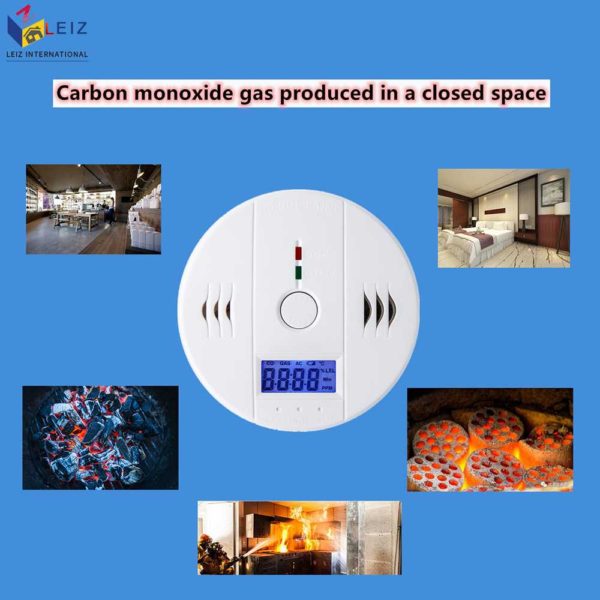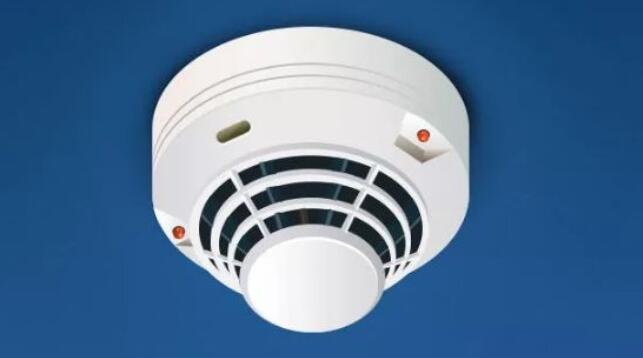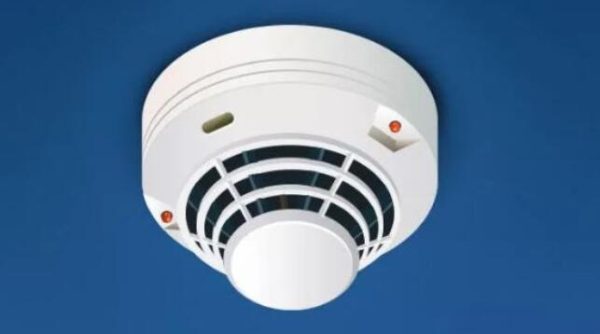In the frequent fire season, the smoke alarm’s invention is undoubtedly tremendous and saves thousands of lives every year. The fire development process can be broadly divided into an initial stage, a development stage and a decaying extinguishing stage. Smoke alarms can detect the smoke from a fire in its early stages and alert people quickly. Today we will talk to you about the common types of smoke alarms to help you understand and choose.
Classification of smoke alarms
First, according to the principle of classification.
Ionic smoke alarms
Ionic smoke alarms work on the principle of ionization of the radioactive source inside the chamber Mei Am241, ionizationionising the positive and negative ions generated, under the electric field’s action, each moving to the positive and negative electrodes. Under normal circumstances, the current and voltage inside and outside the ionization chamber are stable. Still, when a fire occurs, there is smoke into the outer ionization chamber, interfering with the regular operation of charged ions, it will cause the current and voltage to change, destroying the balance between the inner and outer ionization chamber, and when the voltage increase at both ends of the detection ionization chamber reaches a specific value, the detector will sense this. The switch circuit will act to transmit the alarm information.
Photoelectric smoke alarms
There is an optical labyrinth inside the photoelectric smoke alarm with an infra-red pair of tubes installed. When there is no smoke, the infra-red receiver tube does not receive the infra-red light from the infra-red transmitter tube. Still, when the smoke enters the optical labyrinth, the receiver tube receives the infra-red light through refraction and reflection. The intelligent alarm circuit determines whether the threshold value is exceeded, and if it is exceeded, an alarm is issued. It has been developed to take advantage of the fundamental property that smoke generated during a fire can change light’s propagation characteristics. Smoke is absorbed and scattered according to its effect on light. Photoelectric smoke detectors are also divided into two types: light-shading and light-scattering.
Second, according to the transmission method.
Most of the wired ones are networked and require an external power supply, but can be linked with other systems, relay output, such as water spray, once the accident can be immediately linked to deal with. The wireless ones are freestanding, mainly powered by batteries, easier to install than wired ones and do not require additional power sockets, but require regular battery replacement. With the addition of a WIFI module, some smart smoke alarms can upload monitoring data even if they are freestanding and exceed the alarm limit.
There are currently 4 types of smoke alarms on the market: 1. Stand-alone smoke alarms: no wiring required, use battery power. 2. Bus smoke alarms. 3. Multi-wire smoke alarms (traditional smoke alarms). 4. Relay smoke alarms (relay signal output).

The smoke alarms offered by Leiz International are designed using the photoelectric smoke sensing principle to prevent fire by monitoring the concentration of smoke, with a built-in smoke sensor and photoelectric smoke sensing device. The smoke is moving upwards. As it rises to the bottom of the ceiling and enters the alarm’s interior, the smoke particles scatter part of the light beam onto the photocell, the denser the smoke, the more light is scattered onto the photocell. When the light scattered on the sensor reaches a certain level, a buzzer will sound. The sensor will convert the light signal into an electrical signal and transmit it to the automatic fire alarm system, indicating a fire has broken out.
It adopts photoelectric smoke detecting device, which has the characteristics of accurate measurement, sensitive response and high stability; it conforms to the fire GB4715-2005 standard and is ceiling mounted, no need to debug, and can detect fire at 360°. Stable work, beautiful appearance, simple installation. It is widely used in shopping malls, hotels, shops, warehouses, machine rooms, residences, and other fire safety monitoring places. The smoke alarm is an essential part of the automatic fire alarm system and an essential safeguard in people’s working life. It can detect fires in time and emit a strong sound to remind people on the scene to alarm quickly and evacuate quickly, minimizing casualties and economic losses.
The installation of smoke alarms is a protective measure to prevent us from inadvertently failing to detect a fire in time or if smoke will start a fire. However, we occasionally find that smoke alarms installed in our homes for some years may go off from time to time, but there are no abnormalities found on inspection. What is the reason for this? What causes smoke alarms to fail?

One reason for false alarms: low alarm batteries
Most of the smoke alarms used at home are stand-alone type smoke alarms characterized by being battery-powered and do not need to be connected to the mains, making them very convenient to use. However, the battery power is limited, and if it is used for a long time, it will run low, and the alarm will sound an alarm tone. Therefore, it is recommended that home users test their alarms every week to ensure proper working order.
False alarm reason number two: the alarm is too dusty
Smoke alarms after a period of use, the detector labyrinth due to dust accumulation, the sensitivity will improve, which will lead to false alarms or less smoke will also alarm. This situation is pronounced in some places where the air is usually dusty. This is the time to contact the manufacturer or a professional to clean the detector labyrinth.
False alarms: poor alarm installation
The smoke alarm is usually installed in the living room, study or bedroom. Simultaneously, some families install it in the kitchen or install it too close to the kitchen, the kitchen itself is a smoky, hot, humid place, smoke alarms installed here, not only may produce false alarms, but also affect its service life.
The above briefly mentions a few reasons that may cause a home smoke alarm to keep going off. When this happens, first check the entire room to ensure that no fire has occurred. If it is a false alarm, follow the contents of this article to troubleshoot, and if you can’t solve it yourself, contact the manufacturer in time to deal with it.

Smoke alarm false alarm causes and solutions
Case one: power supply. The battery will also make a chirping sound about every minute when it is almost used up (different models will vary in interval and sound, but all have a power shortage warning function). Some people will also consider this a false alarm. But this sound is very distinguishable because it emits a single, short sound, and it does so approximately every minute.
Solution: If your alarm is making this sound intermittently, you can replace the batteries to see if that solves the problem.
Case 2: Smoke from cigarettes. Typically, smoke alarms do not respond to cigarette smoke unless the smoke produced is hefty; for example, many smokers all smoking in the same room could cause an alarm. If the alarm is too old, it will respond even if the concentration of smoke is deficient. So conversely, this is how we can tell if an alarm is old.

Solution: Replace the smoke alarm
Case 3: Dust. If the alarm is continuously sounding the alarm, then it may be that too much dust has accumulated in the alarm.
Solution: It is time to consider replacing the alarm or cleaning it. To clean the alarm, place the end of the hoover close to the opening around the alarm and vacuum it one by one. This will remove all the dust that has accumulated in the alarm.
Case 4: The effect of steam or moisture. Vapour or moisture can concentrate on the sensor and circuit board, and if too much vapour is concentrated, it will sound an alarm.
Solution: Installing the alarm away from steam and moisture, for example, in a bathroom corridor where the alarm should not be installed, will solve the problem. However, if the alarm was working correctly and now reacts to steam or moisture, the problem may be due to the alarm’s age. Older alarms become more sensitive and more likely to respond to vapour and moisture. So false alarms may also occur because the alarm has exceeded its service life and needs to be replaced.
You may be interested in:
How to change smoke detector battery?
What you need to know about Smoke detector and their installation
Where smoke detector are used and how they are commonly installed
FAQ about Smoke Detector








